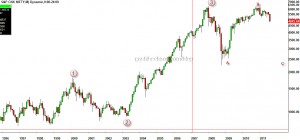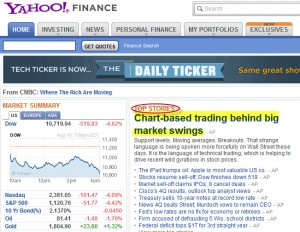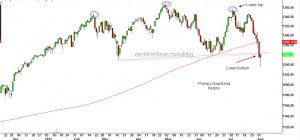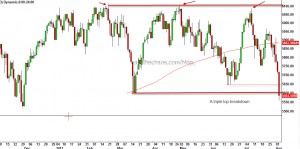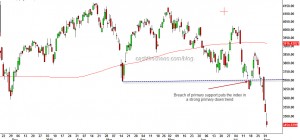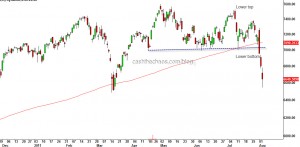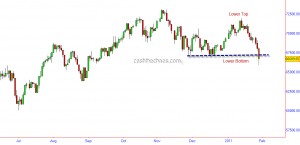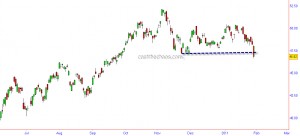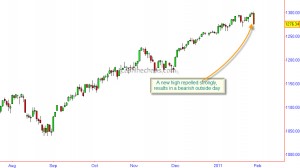Followers of this blog would know that I had been stubbornly insisting that the level of 4800-4700 on the Nifty has to come through before we could even talk about upside potential for the Indian markets. Having reached those levels on Friday, what next for the Indian markets?
In my June 14th post, we discussed the bullish and bearish possibilities for the NSE Nifty and had mentioned that the path shown for the bearish case was the bare minimum outcome. So if the bare minimum was 4800 Nifty, how much more can the Nifty head down? Now for the record, I was probably the only one who spoke about India having entered a bear market and the 2009 lows of Nifty being at risk as early as January 2011 and some of my friends in the media tell me the worst they have heard so far is 4200 Nifty ( you might want to read here, here and here).
So what is the basis for 2009 lows? It is the BIG PICTURE on the Nifty.
The chart above shows the monthly movements of Nifty since 1995. Let me keep this simple without labouring too much into technical jargon. The charts are telling us that the Indian markets are probably still correcting the steep rise from 2003 to 2008 and the potential to revisit the lows of 2009 is still out there. Now slightly technical - Elliott Wave guidelines states that Waves 2 and 4 tends to alternate and since Wave 2 Circle was a zig-zag, the potential for wave 4 Circle to be a flat corrections is quite distinct.
Of course there are other possibilities (like Wave 4 circle ending up as a triangle) but given that we have highlighted in our August 4th post that the global markets are in a bear market, I see this as the preferred path. Of course, we will be flexible and listen to Mr Market if we see signs pointing in the other direction. We can expect the best from the markets but one has be prepared for the worst. So, do not be too early build a portfolio looking at the sharp fall in price. Remember, that market bottom formation is NOT an EVENT, it is a process. Even if this view turns out to be wrong, we will end up buying the market say 2-4% higher than the big low registered. That I think is a fantastic insurance, given that the other scenario presents a market drop way way below current levels.
And for heaven sakes - do not think about QE3 coming in and changing the direction of the markets. Here is a little peek into what happened after QE2:
QE2 was announced on Nov 3rd, within days three of the indices from BRIC countries peaked (India, China and Brazil) and so did the Hang Seng Index, Singapore STI and Colombia Index. Within in a month of QE2 many frontier markets peaked. So, we are better off keeping track of the trend rather than the noise of news.
